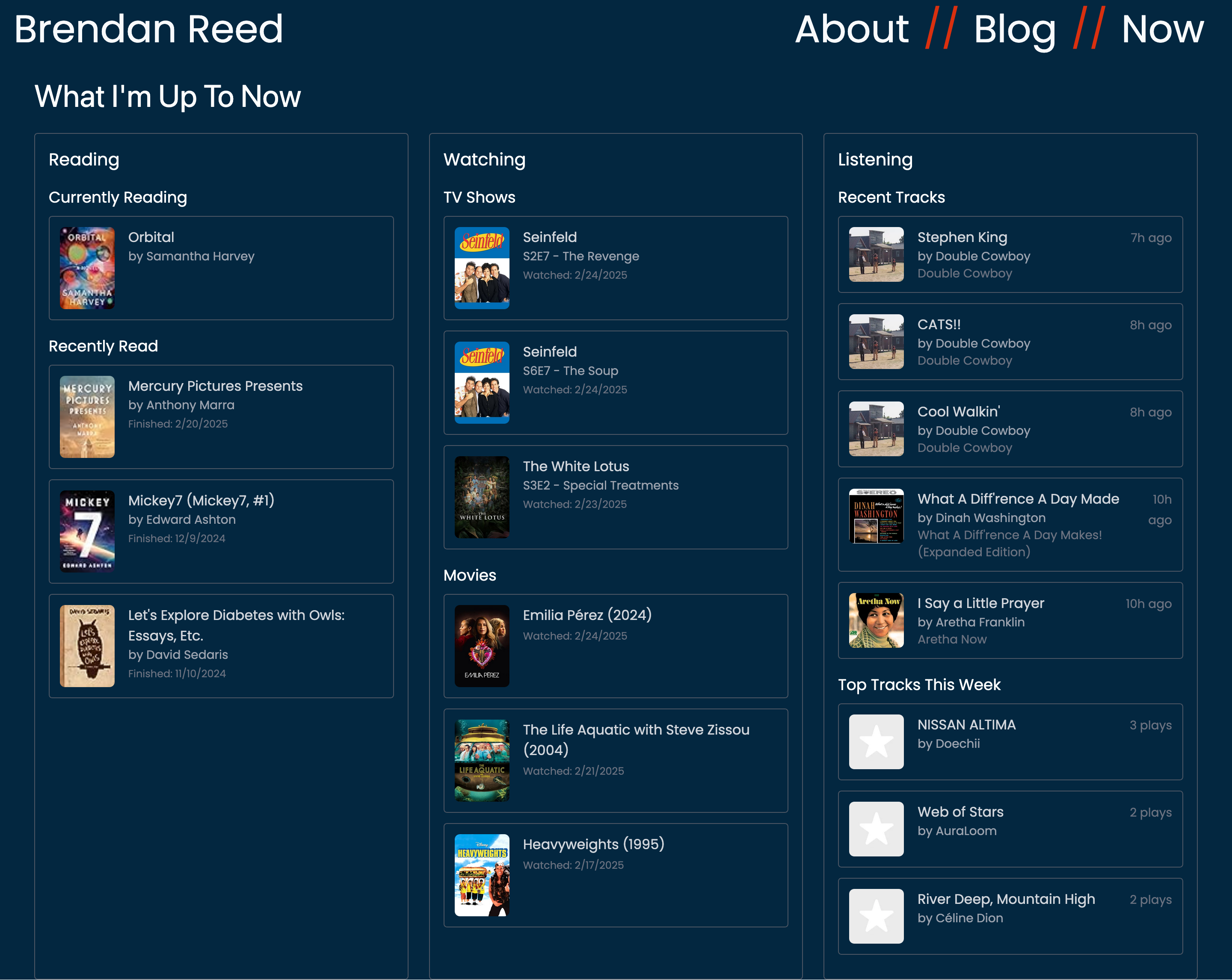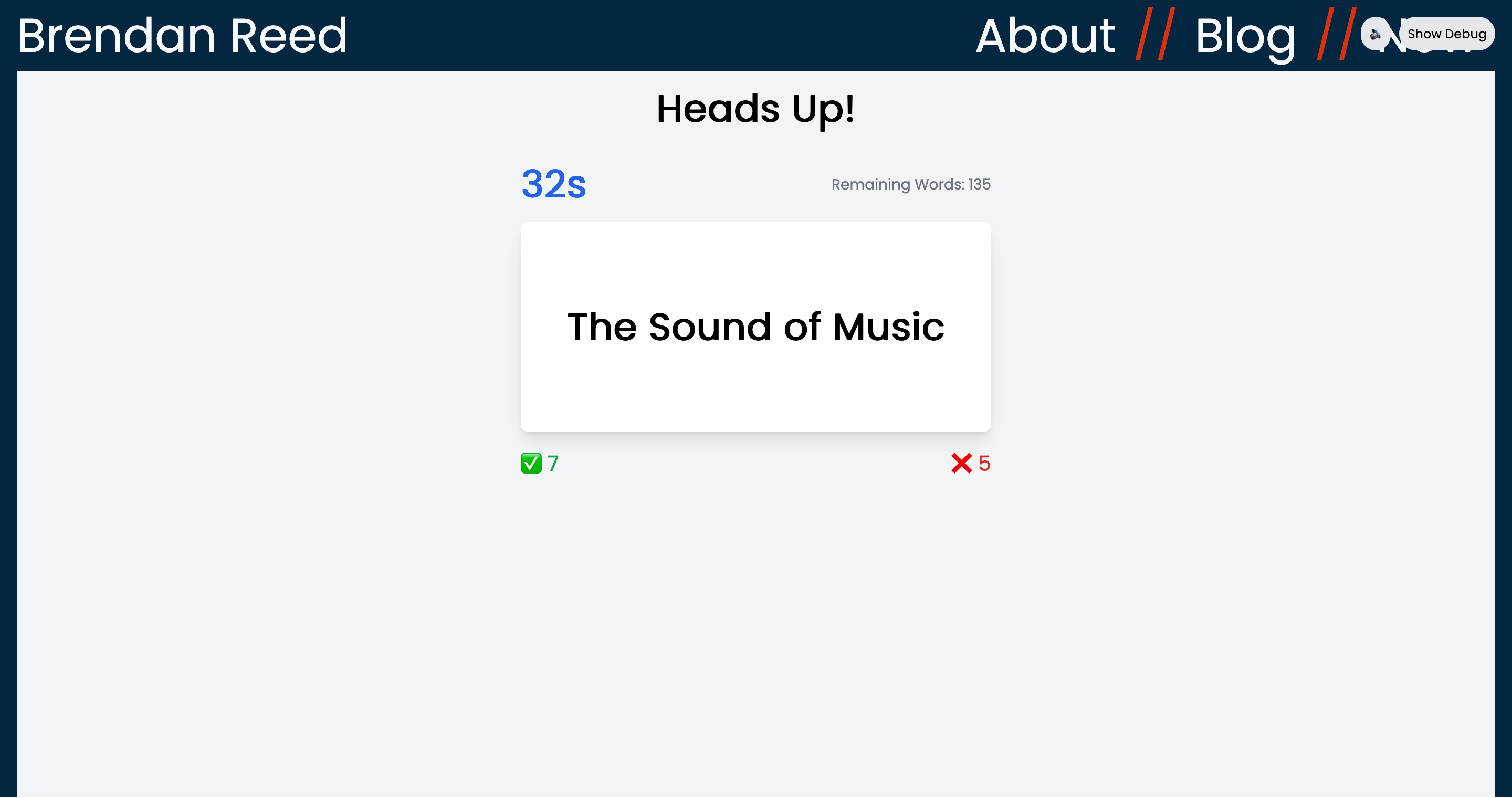Welcome back
Hello again! It only took me a year to get back into writing, but 2024 was pretty busy. Between some big launches at Klaviyo (shoutout to Portfolio & the other analytics features my team got off the ground!) and some big life changes, I've been a little hectic. But now that we're well into a new year, I figured it was time to get back into local development work on the site. I had also wanted to leverage the new LLM tools that had been introduced over the last year and see how I could use them in my workflow.
There are obviously a lot of pros and cons to using LLMs for creative work; my main drive to check them out was an annoyance at getting stuck during side projects. Now there's a lot to be said about getting stuck and working through it, whether that's diving into documentation, writing more tests, or consulting help from others. But realistically, I only have a small window of time to work on side projects when I'm not working full-time or enjoying my hobbies. If I could offload some of the nitty-gritty debugging work to the LLM while I iterated on the general idea for the project, I figured that would be a win.
A clear example of this comes directly from the previously posted blog entry. I had wanted a space to show activity from my Plex server on the site, functioning as a "Now Playing" page. The issues I had run into included dealing with Gatsby's server-side-rendering setup, Plex authentication, and trying to use serverless functions. Eventually, life happened, and I abandoned the whole setup for over a year! So it was time to dust off the cobwebs and get down to business.
Project 1: A /now page
This is the first of two projects I recently worked on: an updated /now page. To develop it, I used Claude's chat feature with Sonnet 3.5, with a pro subscription. I knew I wanted the original plan to stay in place of showing media that was played on my Plex server, but I wanted to add more data as well. I decided to go with a different approach: tying in book data from Goodreads, music data from Last.fm, and TV/movie data from Trakt. I'm pretty good about keeping all of these up to date, and with the exception of Goodreads they have APIs available (note: Trakt has its API locked behind a subscription).

With the plan in mind, I went to chat with Claude. I had given it the general scope, what the existing site is running, and some guidance to stick with the existing style. This led to a lot of back and forth within the chat UI, oftentimes running into rate limits and the reality of the LLM's context window. It resulted in a lot of start-and-stop development, but after around a week we got to a working page. Currently, if you go to /now, three serverless functions will fire off in Netlify to grab the latest data for the page, and those will render as the API requests finish. Realistically, if I hadn't used the LLM to do this, I would have gotten frustrated and abandoned the project again for several months. Instead, I got it done within 2 weeks, and it gave me the itch to continue on more side projects.
Project 2: A game
The second project involved creating a game, something which I haven't done since some college courses. My partner and I like the mobile game "Heads Up", which sees one player holding their phone up with a hidden word that the other player is trying to get them to guess. It's a fun way to pass the time, but we often run through all of the available words in the app, and we wanted some other customizations too. I also wanted to try some more automated LLM tools, since I was getting tired of the back and forth in the Claude chat UI.
Here, I started by utilizing goose, which is an agent tool developed by folks from Block. This worked really well to start; I gave a general plan for the project, and it went off to the races by implementing the code directly on my machine. This was already a huge boost from the previous approach of the Claude chat UI, and greatly sped up development time on the project. The second tool was Cline, which features a VS Code extension. The secret sauce of this tool is its Plan/Act functionality, which sees the LLM develop a plan in one tab for how to go about executing, and then by switching to the act tab it'll actually implement the task. It also goes into self-testing the given task, which helped catch easy errors in a local development setup. By using Cline, I was able to get a fully-functioning game implemented, with sound effects, customizable categories, and score tracking!

Wrapping up
I was a skeptic for a bit, but using LLM tools (especially agents) has successfully scratched my itch to start up more side projects. I'm already using them in smaller ones (such as automatic time tracking in Toggl or trip planning for our next vacation) and am thinking of the next big project to enhance the site. There are definitely pros and cons, but I am a convert to the integrated LLM in IDE setup that Cline provides via its VS Code extension. It's simple, works with my existing IDE, and I don't have to worry about yet another subscription (looking at you, Cursor and Windsurf). I hope to share more here as I get cracking — and I'd love to discuss more with others!